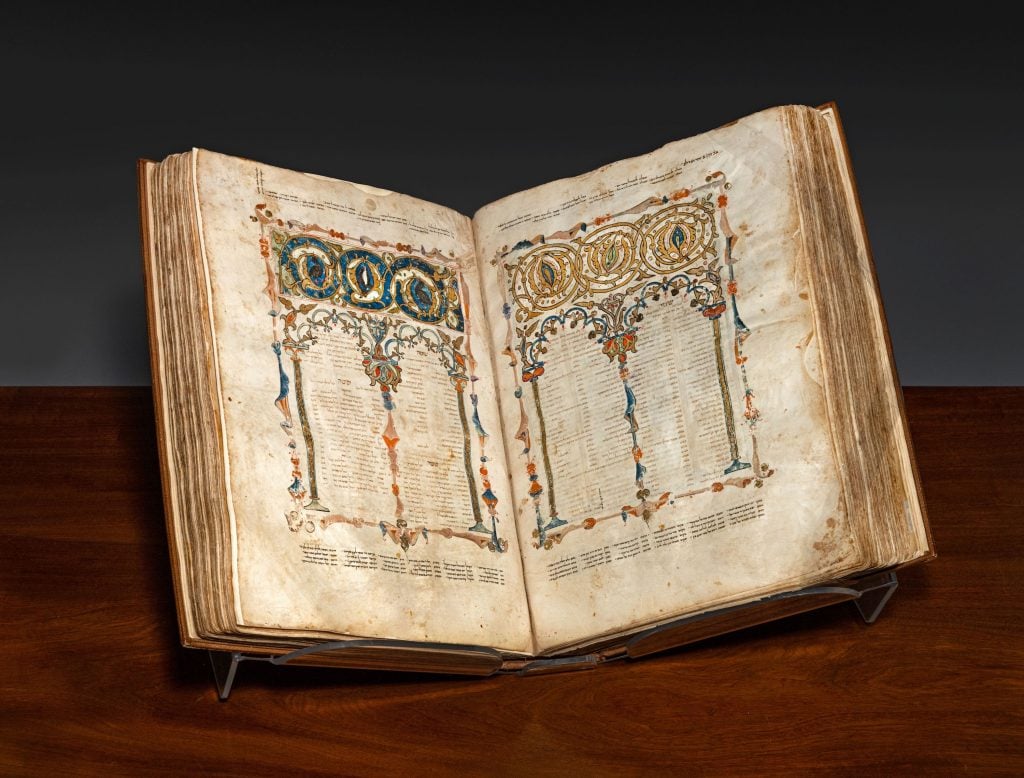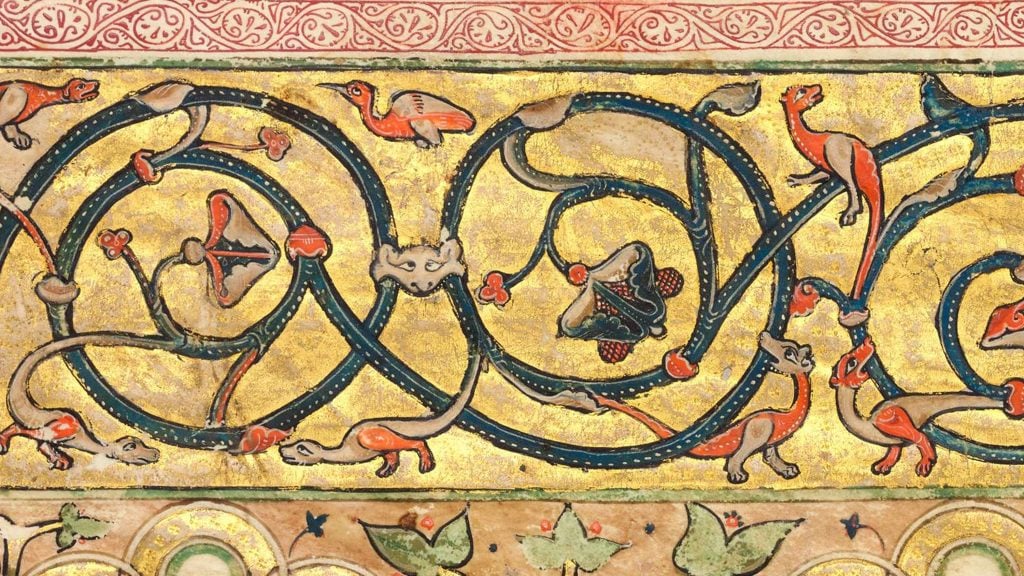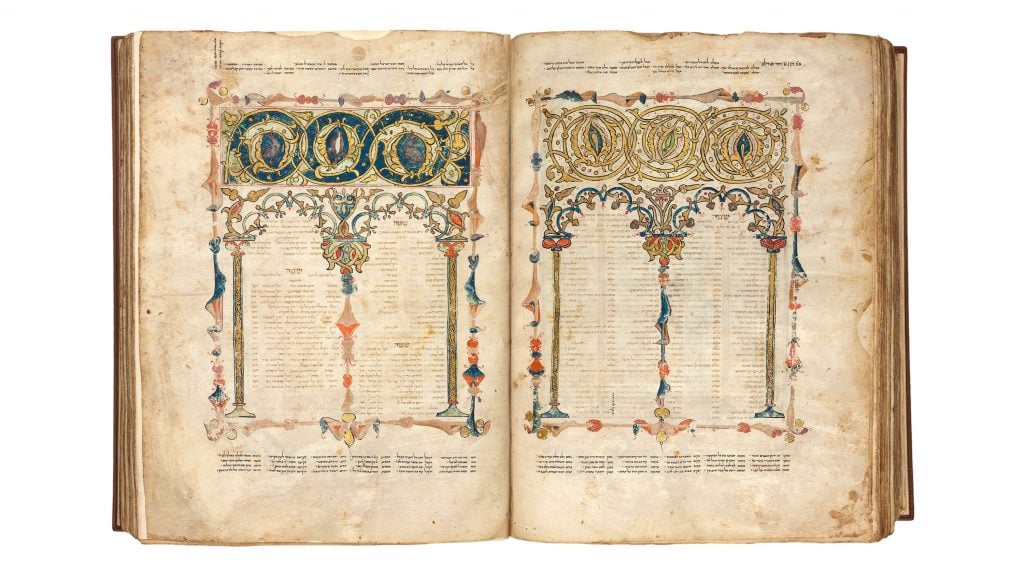Collectibles
This Hebrew Bible From Medieval Spain Could Make $7 Million at Auction
The seller, Jaqui Safra, acquired the Shem Tov Bible in a private sale in 1994.

Travel to the Spanish region of Catalonia today and it’s easy to uncover evidence of the Jewish communities that thrived during the Middle Ages. There’s Girona’s labyrinth Jewish Quarter, Spain’s only Romanesque mikveh in Besalú, and Barcelona’s Montjuic, a name that recalls a hill once used as a Jewish cemetery.
Other indications of Spain’s Golden Age, a period from the 8th to the 12th centuries when Jews, Muslims, and Christians coexisted with relative tolerance, have ventured further afield. The Shem Tov Bible is one such example. Painstakingly created by the eponymous Rabbi in the early 14th century, it’s considered one of the most important manuscripts to have escaped medieval Spain.
This survival is no accident. After completing the masterpiece on parchment in 1312, he decided the Bible was too wondrous, too holy to remain in the diaspora. Along with a colleague, he spent two years on the road, arriving in the land of Israel in 1315 and thereby saving the Bible from the flames and fury of the Inquisition that would arrive a century-and-a-half later.

A detail of the pen work evident throughout the Shem Tov Bible. Photo courtesy Sotheby’s.
This 700-year-old Bible is set for a standalone auction at Sotheby’s New York on September 10 where it is estimated to fetch between $5 million and $7 million. Its last appearance at public auction came in 1984 (also at Sotheby’s) when it was bought by an anonymous European collector for $825,000, then a record for a Hebrew Bible. In 1994, the Shem Tov Bible was sold privately to its current owner, Jaqui Safra, a prodigious collector of historical objects whose Codex Sassoon sold for $33.5 million at auction last year.
Rabbi Shem Tov, better known as Ibn Gaon, was born in the late 1200s in Soria, a town under the Crown of Castile that boasted a small, but thriving Jewish community. After studying with eminent rabbis of the day in Barcelona, he got to work on the two texts that would secure his reputation: a commentary on the writing of the 12th-century Rabbi Moses Maimonides and his illustrated Bible.

The Shem Tov Bible features a blend of Christian, Islamic, and Jewish design and decorative styles. Photo courtesy Sotheby’s.
The 768-page manuscript is valued for its fine illustrations wrought in delicate pen that elegantly combine Christian and Islamic ornamental motifs. Pages are interwoven with brightly colored archways that support animals both fantastical and real as well as plants and abstract motifs.
The Shem Tov Bible also serves as a precious connection to the Hilleli Codex, a lost manuscript created in the 7th century that was revered as the most accurate recording of the Hebrew bible. Ibn Goan provided numerous references to the mythic text.
“The Shem Tov Bible is an essential piece of religious history that plays a critical part in the faithful, accurate transmission of the Hebrew bible as we understand it today,” said Sharon Liberman-Mintz, a Judica specialist at Sotheby’s. “The pages of the bible, crafted during the Golden Age of Spain, sing with the harmony of Jewish, Christian, and Islamic artistic traditions, and speak to the incredibly fertile moment of cultural dialogue that flourished at the time.”





